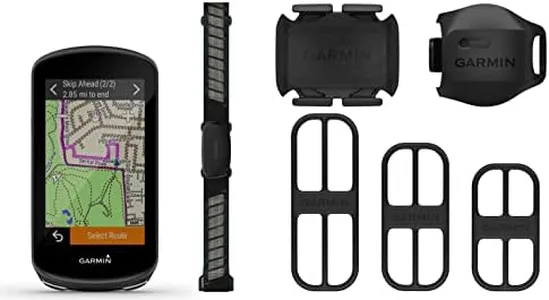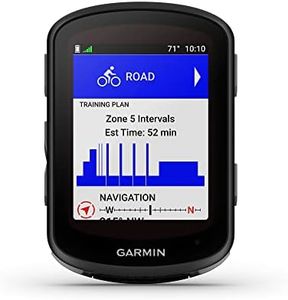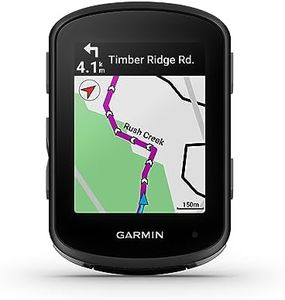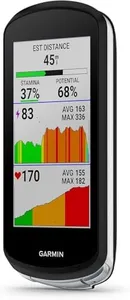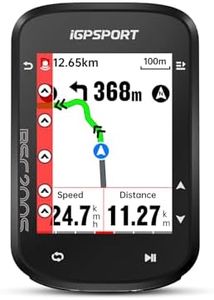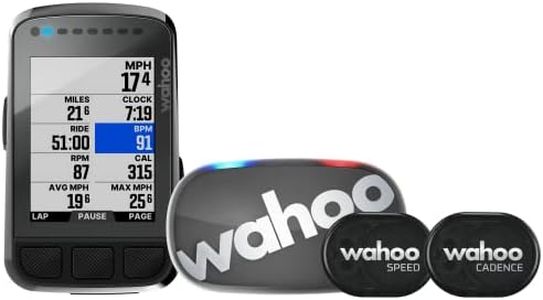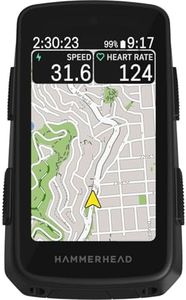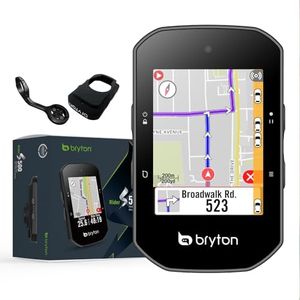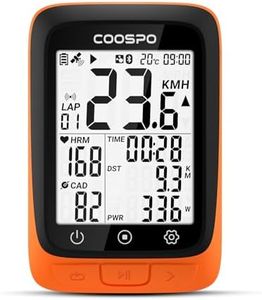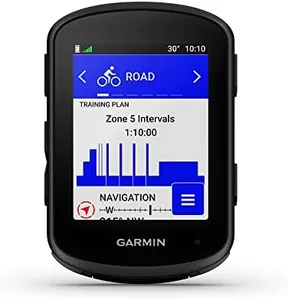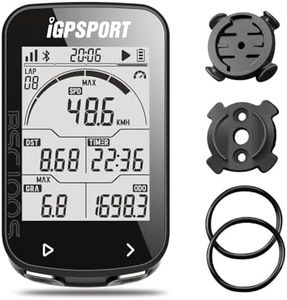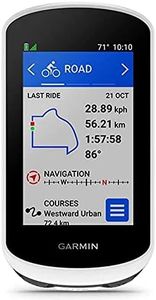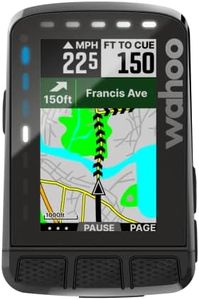We Use CookiesWe use cookies to enhance the security, performance,
functionality and for analytical and promotional activities. By continuing to browse this site you
are agreeing to our privacy policy
10 Best Cycling Gps Units
From leading brands and best sellers available on the web.Buying Guide for the Best Cycling Gps Units
Choosing the right cycling GPS unit can greatly enhance your cycling experience, whether you're a commuter, road cyclist, or an off-road adventurer. The best GPS unit for you will depend on how you ride, the features you value most, and your comfort with using technology. Start by considering how you'll use your cycling GPS—do you want to track basic stats, follow complex navigation, analyze your performance, or simply log your rides for fun? Knowing your main goal will help you focus on features that truly matter for your rides rather than getting overwhelmed by all the bells and whistles.Screen Size and TypeThe screen is the main way you interact with your GPS unit, displaying stats, maps, and routes. Larger screens are easier to read, especially for detailed navigation or at a glance while riding, but tend to make the unit bulkier and heavier. Smaller screens keep the device compact and light but can be harder to read, especially in bright sunlight or at speed. Touchscreens can make navigation easy, similar to a smartphone, but some riders prefer physical buttons which work better with gloves or in wet conditions. Think about your eyesight, typical riding conditions, and whether you prioritize a compact setup or high visibility when choosing your preferred screen size and input type.
Battery LifeBattery life determines how long your GPS will last before needing a recharge. Shorter rides or daily commutes might only need a few hours of power, but long-distance rides, touring trips, and multi-day adventures demand far more endurance. GPS units generally range from around 8 hours to over 24 hours of battery life. If you mostly ride short distances or can recharge frequently, a shorter battery life may be fine, but for endurance rides or remote adventures, a longer-lasting device is crucial so you don’t run out of power mid-ride.
Navigation and MappingNavigation features let you plan and follow routes or maps, and some units offer turn-by-turn directions, rerouting, and even offline mapping for areas without cell service. Basic models may only show a breadcrumb trail or basic stats, while more advanced models include full-color maps and interactive navigation. If you mainly ride familiar local routes, advanced navigation isn’t as important; but if you explore new areas, travel often, or enjoy off-road excursions, comprehensive navigation and mapping features will greatly enhance your ride.
Data Tracking and SensorsMost GPS units track basic data like speed, distance, and time. Many also connect to external sensors for heart rate, cadence, or power measurement, offering deeper performance analysis. Some can even connect to smart trainers or display notifications from your smartphone. If you’re a casual rider, basic stats may be all you need, but if you’re interested in training or performance improvement, look for devices with compatibility for extra sensors and more detailed data tracking.
Connectivity and Smart FeaturesConnectivity options like Bluetooth and ANT+ let the device communicate with your smartphone, sensors, or other cycling accessories. Features such as wireless ride uploads, live tracking, or on-screen notifications add convenience and safety. For those who prefer to stay disconnected while riding, these aren’t must-haves, but tech-savvy users or those seeking extra features and easy data syncing will want to check what connectivity options are included.
Durability and Weather ResistanceCycling happens outdoors, often in unpredictable weather, so your GPS unit should handle rain, mud, heat, and vibrations. Units come rated for water and dust resistance—look for ratings like IPX7 (waterproof) or rugged designs if you regularly ride in tough conditions. Casual riders on sunny roads might not need maximum ruggedness, but for mountain biking or unpredictable weather, higher durability ensures your device keeps working ride after ride.

